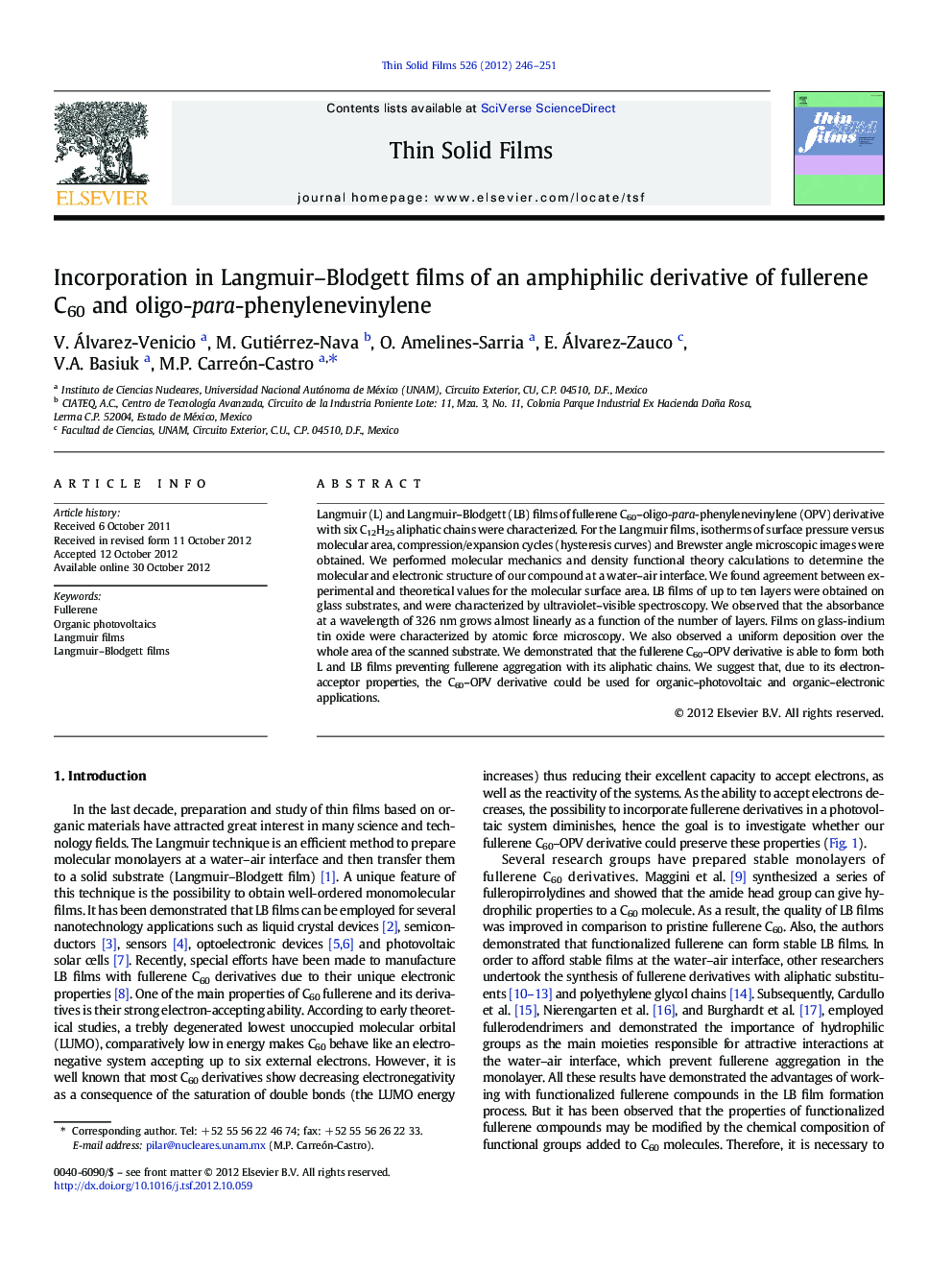| Article ID | Journal | Published Year | Pages | File Type |
|---|---|---|---|---|
| 1666474 | Thin Solid Films | 2012 | 6 Pages |
Langmuir (L) and Langmuir–Blodgett (LB) films of fullerene C60–oligo-para-phenylenevinylene (OPV) derivative with six C12H25 aliphatic chains were characterized. For the Langmuir films, isotherms of surface pressure versus molecular area, compression/expansion cycles (hysteresis curves) and Brewster angle microscopic images were obtained. We performed molecular mechanics and density functional theory calculations to determine the molecular and electronic structure of our compound at a water–air interface. We found agreement between experimental and theoretical values for the molecular surface area. LB films of up to ten layers were obtained on glass substrates, and were characterized by ultraviolet–visible spectroscopy. We observed that the absorbance at a wavelength of 326 nm grows almost linearly as a function of the number of layers. Films on glass-indium tin oxide were characterized by atomic force microscopy. We also observed a uniform deposition over the whole area of the scanned substrate. We demonstrated that the fullerene C60–OPV derivative is able to form both L and LB films preventing fullerene aggregation with its aliphatic chains. We suggest that, due to its electron-acceptor properties, the C60–OPV derivative could be used for organic–photovoltaic and organic–electronic applications.
► We performed isotherm and hysteresis studies of fullerene derivative compound. ► We found that the theoretical and experimental molecular areas agree. ► We deposited Langmuir–Blodgett (LB) films on glass-indium tin oxide. ► LB films were characterized using UV–visible spectroscopy. ► We observed the morphology of the LB films through atomic force microscopy.
